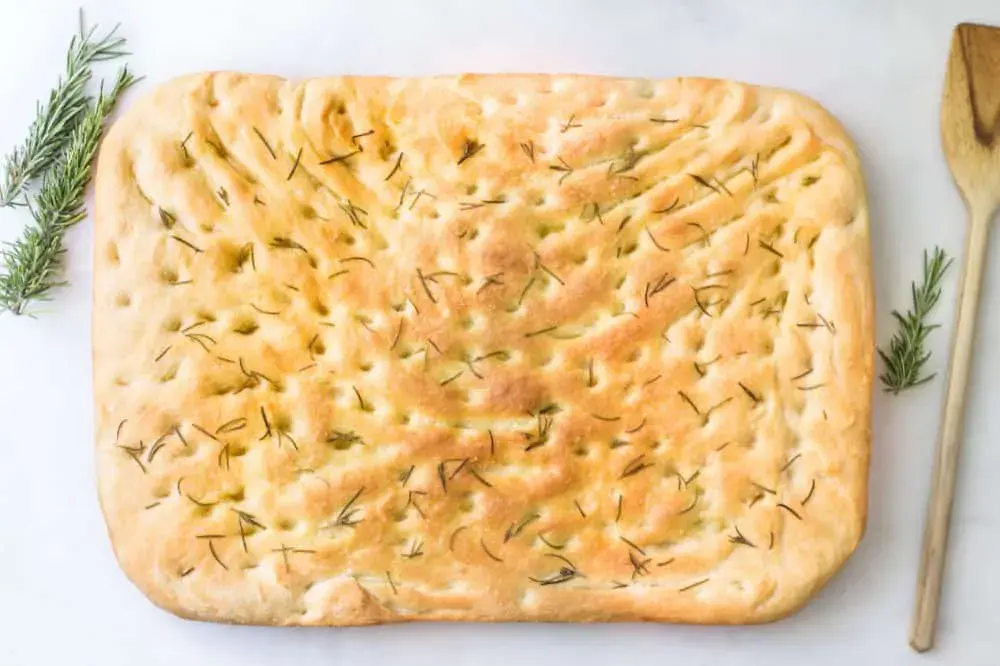Use San Marzanos for a Mediterranean flavor
If you often visit culinary forums, you’ve likely come across the allure of San Marzano tomatoes. This particular variety originates from the San Marzano region in Italy (though they can also be cultivated in the United States) and is renowned for its ideal balance of sweetness, savoriness, and acidity, attributed to the area's volcanic soil. While San Marzanos are pricier than other types, making focaccia is a perfect occasion to indulge in these exceptional tomatoes.
Given their unique qualities, pairing them with the enriched flatbread accentuates their natural flavor. "I frequently use San Marzano tomatoes marinated in oregano, olive oil, salt, and pepper," says Chef Luca Corazzina. Marinating allows the tomatoes to absorb the flavors of the herbs and the rich oil, enhancing their taste, while their vibrant red color beautifully contrasts with the golden crust of the bread. A few extra sprinkles of oregano, and you’ll have a delightful taste of Italy right in your own kitchen.
For a focaccia bursting with freshness, use lemon and thyme
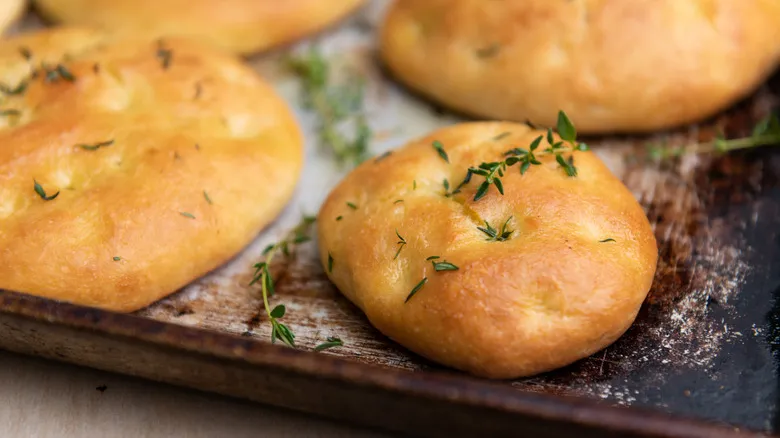
Chef Luca Corazzina suggests, "A delightful and unexpected pairing is a light dusting of grated lemon zest combined with thyme." He notes that this blend of lemon and thyme "infuses the focaccia with a bright, citrusy freshness" that complements the yeasty bread beautifully. As with nearly any topping for this dish, finishing the bread with a sprinkle of coarse sea salt and a drizzle of high-quality olive oil will enhance the flavors even further.
While zested lemon peel serves as an appealing garnish on its own, you can create even more visual appeal by placing thin, deseeded lemon slices on top of the focaccia before baking. Additionally, you can elevate the presentation by incorporating freshly chopped thyme into the uncooked dough and adding whole sprigs to the finished bread for a decorative touch. With just two ingredients, this is one of the simplest ways to enhance your focaccia, and its vibrant flavors make it an excellent match for lighter dishes like grilled chicken and roasted vegetables.
Add sweet onions and figs for a luxurious loaf
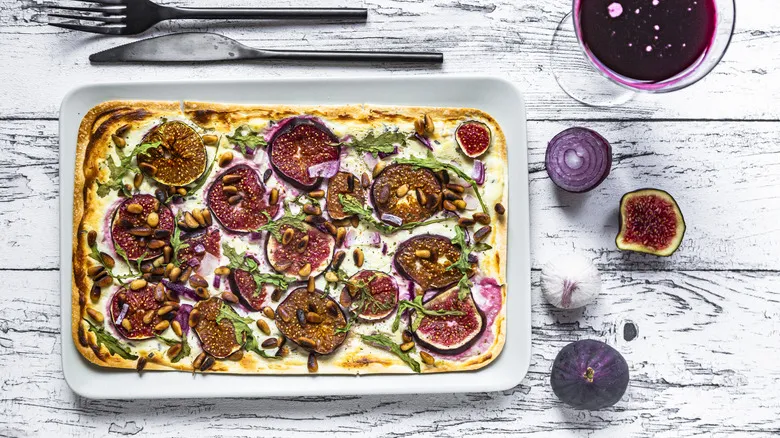
To give your focaccia a distinctive flair, Chef Luca Corazzina suggests that "Caramelized onions or thinly sliced figs, complemented by a drizzle of balsamic glaze, create a delightful harmony of sweet and savory." While each of these ingredients would be delicious on focaccia on its own, together they elevate simple flatbread into a truly restaurant-quality dish. The sweet flavors from each component blend seamlessly without overwhelming the palate, thanks to the tanginess of the vinegar (and to a lesser extent, the onions), making this enticing combination ideal for both casual wine evenings and elegant dinner gatherings. When preparing your onion and fig focaccia, add the figs before placing the dough in the oven and drizzle the glaze after it comes out. For the caramelized onions, you can either incorporate them into the dough or use them as a topping after baking.
If you prefer to avoid the somewhat tedious process of caramelizing onions, feel free to add raw slices of the vegetable directly to your uncooked dough. You can also enhance the dish's richness by melting a few slices of aged cheddar on top of the focaccia or sprinkling fresh goat cheese over it.
Turn vegetables into bread art
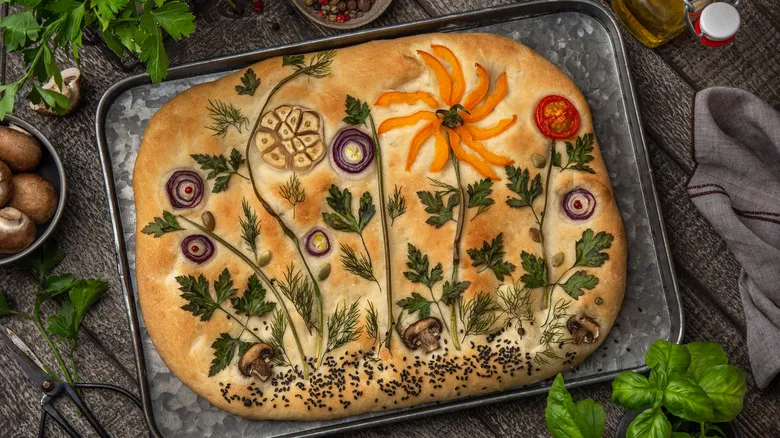
If you're aiming to give your focaccia a stunning look, Chef Luca Corazzina has some great vegetable suggestions. "For a more artistic touch, incorporating thinly sliced zucchini or bell peppers can create eye-catching patterns," he explains. One method for embellishing focaccia is to press your chosen design elements directly into the dough, and the firmness of these vegetables helps them maintain their shape.
However, it's important to be practical in your approach. When designing your focaccia, Corazzina advises keeping your toppings on the drier side to prevent the bread from becoming soggy. Additionally, heat can diminish the vibrant flavor of fresh leafy herbs, so it's best to reserve your sprinklings of parsley or basil for garnishing just before serving, rather than mixing them into the dough.
As you create your decorated focaccia, remember to brush it with olive oil and a dash of sea salt before adding the toppings. With a sharp paring knife and a little practice, you can shape the vegetables into a design that looks almost too beautiful to eat.
Make a statement with edible flowers

Adorning your focaccia with a selection of edible flowers is one of the most sophisticated and visually striking decorating methods available. There are numerous varieties of edible flowers, such as lavender, daisies, and violets. Their natural vibrancy and beauty make them ideal for decoration; all you need to do is arrange them thoughtfully on top. However, Chef Luca Corazzina recommends adding them after baking, stating, "Make sure to place them on the focaccia once it's completely baked to maintain their inherent beauty and fragrance." Just keep in mind that sourcing them fresh can be somewhat challenging.
Since edible flowers are not cooked, it's crucial to know their origin. The flowers found outside your local supply store may not be suitable unless you're willing to risk exposure to any chemicals they might have been treated with. Instead, seek out fresh edible flowers at a farmers' market, purchase a dried variety—such as Hands on Earth's Mixed Dried Edible Flower Petals—online, or cultivate your own small garden from seeds featuring your favorite blooms. Pansies, chamomile, and coriander blossoms are just a few of the edible flowers in Chef Corazzina's focaccia garden. "These flowers contribute vibrant colors, delicate textures, and a subtle, floral fragrance to your focaccia," he notes.
Recommended
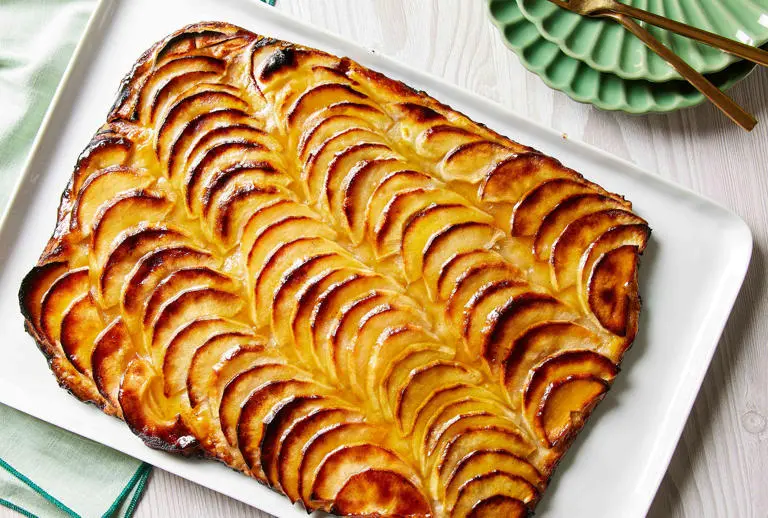
Ina Garten's Favorite Creation Is A 'Simple And Elegant' Dessert Recipe
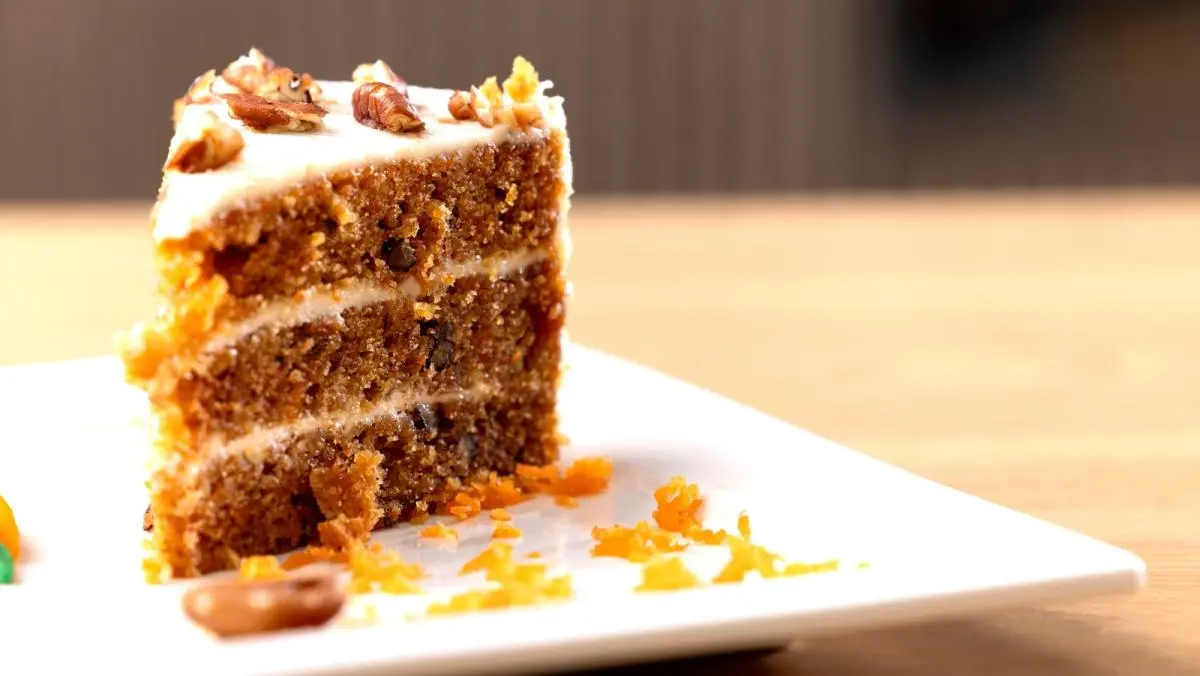
A Simple Storage Mistake Is Ruining Your Cake's Freshness
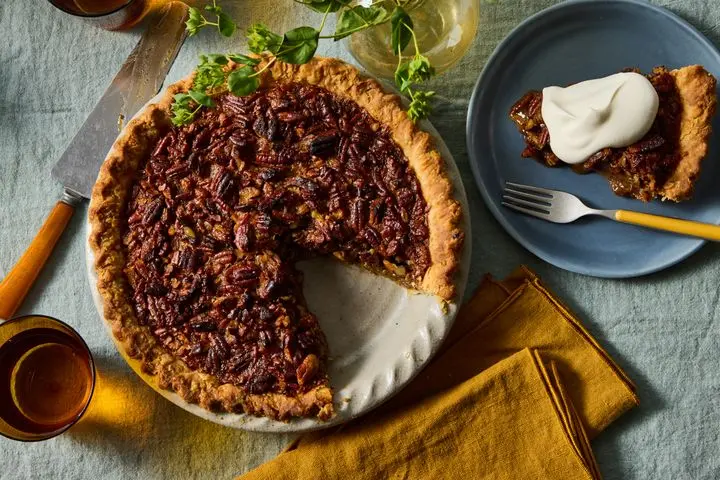
Why Bakeries Call A Derby Pie 'Kentucky Bourbon Pie'

Ina Garten Only Uses One Type Of Egg When Baking
Next up

